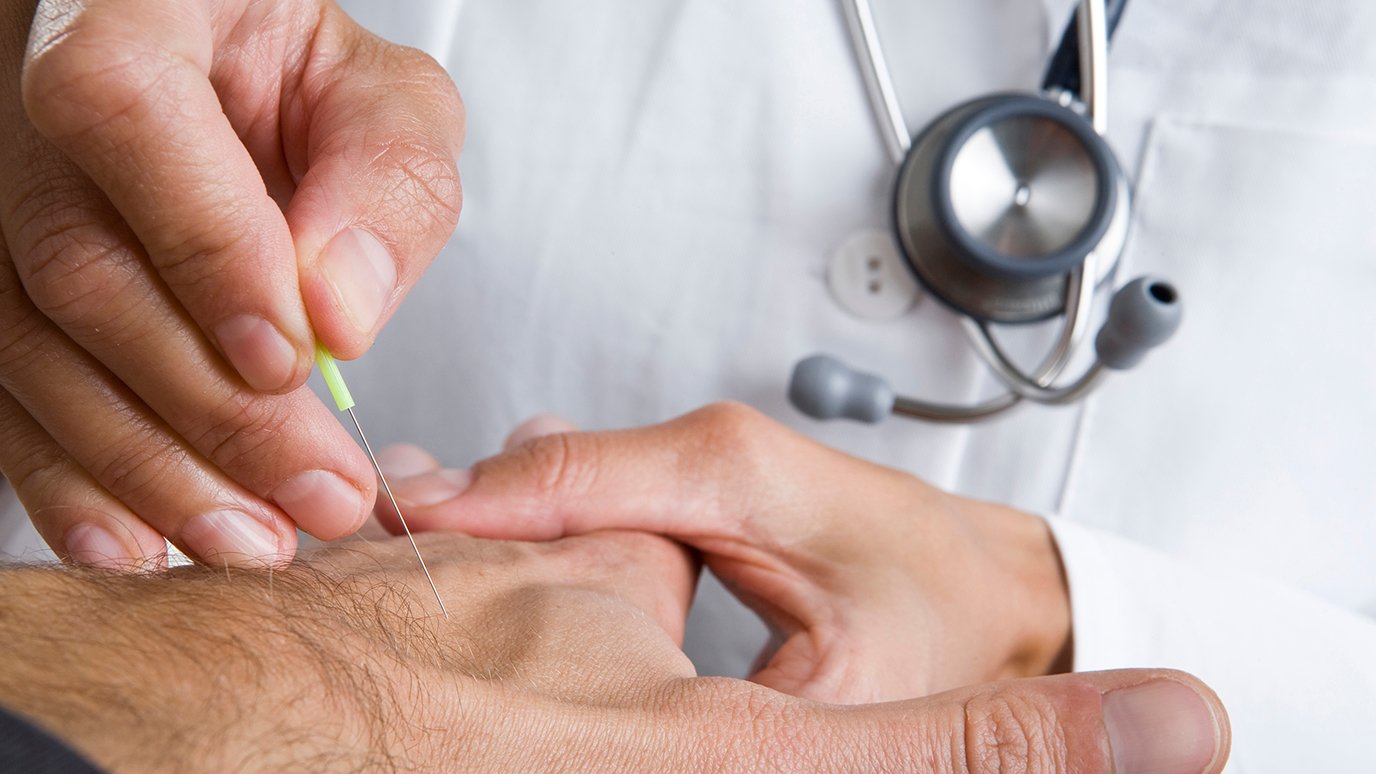Patients with head and neck cancer experienced less dry mouth after receiving acupuncture three days a week during radiation treatment, according to a study by researchers at The University of Texas MD Anderson Cancer Center.
The study results, published in JAMA Network Open, are the first randomized, placebo-controlled Phase III study to evaluate the use of acupuncture during radiation treatment to reduce the incidence and severity of radiation-induced xerostomia, or dry mouth. Acupuncture has very few side effects and is relatively low-cost compared to standard treatments such as medications and saliva substitutes. These results support a 2011 study that showed symptoms improved up to six months after radiation treatment with simultaneous acupuncture sessions.
“Xerostomia is a serious problem for head and neck cancer patients undergoing radiation therapy, and up to 80 percent of patients may suffer from the condition by the end of radiation therapy,” said study lead researcher Lorenzo Cohen, PhD, professor of palliative care, rehabilitation and integrative medicine and director of the Integrative Medicine Program. “This condition has a serious impact on quality of life and oral health, and current treatments have limited efficacy.”
True acupuncture (TA) had significantly lower xerostomia scores than standard care control (SCC), slightly lower than sham acupuncture (SA), and no difference between SA and SCC. One year after the end of radiotherapy, the incidence of clinically significant xerostomia was 35% in the TA group, 48% in the SA group, and 55% in the SCC group.
The study included 339 head and neck cancer patients who received radiation therapy at MD Anderson and Fudan University Cancer Center in Shanghai between December 16, 2011 and July 7, 2015. Patients were divided into three groups. One group received real acupuncture, another group received sham acupuncture, and a third group, the SCC group, received radiation therapy and oral health education, but no acupuncture. None of the patients had received acupuncture treatment before participating in the study.
Patients assigned to TA or SA received acupuncture 3 days per week on the same day as radiation therapy, and treatment lasted 6 to 7 weeks. In the simulated treatment, a real needle was inserted into a location not indicated for xerostomia, a real needle was inserted into a simulated location, and a placebo needle was inserted into a simulated location.
The results are based on data obtained from a self-report questionnaire. Patients completed the Xerostomia Questionnaire (XQ), an eight-item survey assessing symptoms. An XQ score of less than 30 corresponds to mild or no xerostomia symptoms. Data were collected at baseline, at the end of radiation treatment, and 3, 6, and 12 months after radiation treatment.
TA significantly reduced dry mouth symptoms and reduced severity 1 year after treatment. The xerostomia score for the TA group was 26.6, compared to 31.3 for the SA group and 34.8 for the SCC group.
The Acupuncture Expectations Scale (AES) was used to measure the relationship between acupuncture expectations and clinical response. Patients completed the AES at baseline, after four acupuncture sessions, and at the end of acupuncture treatment. There were no differences between groups or between sites.
“We now have some evidence that patients should incorporate acupuncture alongside radiation therapy as a way to prevent the severity of xerostomia,” Cohen said. “With this study, we believe we can add acupuncture to the list of prevention and treatment options for xerostomia, and guidelines for the use of acupuncture in oncology settings should be revised to include this important chronic condition.”
Secondary analyses showed significant differences between sites in response to placebo. Chinese patients had little to no placebo response to sham acupuncture, whereas MD Anderson patients had a large placebo response, indicating that both forms of acupuncture were effective. Further research is needed to understand these site differences, but it has been suggested that they may be due to the environment in which acupuncture is delivered, cultural influences, or the patient-practitioner relationship.
Future studies will focus on ensuring that acupuncture is properly controlled and will evaluate the disparity in response to sham acupuncture. Additional research is needed to confirm the trial results and better understand the neurological mechanisms of acupuncture.
A complete list of collaborators and their disclosures is included in the paper.
This research was supported by National Cancer Institute (NCI) grants CA121503 and CA148707 (PI L Cohen), NCI Cancer Center Support Grant CA016672, and Shanghai China Science and Technology Commission grant 05DZ19747 (PI Z Meng). was supported in part by. He was funded in part by the Richard E. Haynes Distinguished Professorship (L. Cohen) in Clinical Cancer Prevention at the University of Texas MD Anderson Cancer Center.

